Understanding Back Injury Payouts in Australia
If you’ve experienced a back injury due to another person’s or entity’s negligence, you may have grounds to file an injury compensation claim. This article
Gerard Malouf & Partners Manage Cases For Clients Across All Areas Of Personal Injury Law, Inheritance Disputes And Superannuation Disputes.
Gerard Malouf & Partners Have Provided Friendly, Experienced Legal Advice To Communities Across Australia For Over 35 Years. Our Personal Injury Lawyers Have Taken On Ten’s Of Thousands Of Cases And We Are Proud To Have Won Billions Of Dollars For Our Clients.
Read Our Latest Articles, Case Studies Or Commonly Asked Questions Concerning Your Legal Claims And Compensation Law.
On 2 August 2022, the NSW Supreme Court of Appeal handed down a decision in relation to an accident that occurred on 17 August 2014. This accident filled under the old scheme motor vehicle accident legislation which was the Motor Accidents Compensation Act 1999.
In this case, Ms Collins was driving along Kings Highway and after a long bend saw a line of stationary vehicles that extended from an original earlier accident. To avoid a collision with the rear-most vehicle, Ms Collins steered her vehicle up the embankment on the left side of the road, causing it to overturn. She suffered injuries and brought a claim against the driver of the original accident. Whilst this was a single vehicle accident, it was caused by an earlier accident.
At first instance, the Court held that the insurer of the driver from the earlier accident was not liable. Ms Collins appealed this decision and argued in the Supreme Court of Appeal, that her injuries resulted from a “dangerous situation” caused by the earlier accident insured driver’s driving of his vehicle. Approximately half an hour before Ms Collins accident, the insured driver had crossed onto the wrong side of the road and collided with another vehicle. A build-up of traffic for approximately 1 to 2 km from the site of the original accident ensued.
Judge Basten held at paragraph 4 that:
“There was a “dangerous situation” because
Judge Kirk held at paragraph 6:
“The issue here was whether the distance in time and space between the insured driver’s collision and the appellant’s accident was such as to take the appellant outside of the class of road users to whom the duty was owed. It did not. The consequences of the original collision were still in play. The appellant suffered physical injury, being a risk of harm of a kind that was certainly reasonably foreseeable, and which the insured driver should have had in contemplation.”
It was determined that the risk must be assessed from the time of the original accident, rather than by referring to the precise circumstances in which the risk materialised. The “dangerous situation” caused by the insured driver in the original accident was held to be ongoing.
If you have been injured in a motor vehicle accident, you should always seek advice from a lawyer about your rights. Speak to one of our expert solicitors at Gerard Malouf & Partners Compensation Lawyers on 1800 004 878 for a free, no obligation consultation or complete our email enquiry form.

Pedestrians can sustain injuries in a number of ways, including hit and run incidents or being struck whilst crossing the road. If you’ve been injured in a motor vehicle accident, you’ll be glad to know that victims have the opportunity to receive compensation as part of the motor accidents compensation scheme.
Each motor vehicle accident claim requires a police report, accident notification form and personal injury claim form. The claim form is central to your claim and we recommend speaking with a lawyer to ensure the best chance of success. Once you lodge your claim, an Independent Medical Assessor reviews your claims.
Immediately following a car crash, call the police if you suspect the other driver is under to influence, and call for paramedics if you suspect you have an injury.
Following this, calling your insurer is advised, as well as taking details from other parties and witnesses. Note down any details including time, data and take photos of the scene.
If you’ve experienced a back injury due to another person’s or entity’s negligence, you may have grounds to file an injury compensation claim. This article
Case Overview Our client presented to a vascular surgeon, seeking treatment of her varicose veins in her right leg. Following the surgeon’s recommendation, our client
Case Overview A woman from Green Valley was a passenger in a car when the driver lost control of the vehicle, leading to a collision
Case Overview At the time of her injury, our client was working as a cleaner at a private residence in Kurrajong. During the course of
Case Overview We acted for a client from Western Sydney who was involved in a serious motor vehicle accident. The other driver collided into our
Case Overview We acted for a client from Coffs Harbour who was involved in a serious motor vehicle accident. The driver failed to give way






Your location is currently:
Please wait while you are redirected to the right page...